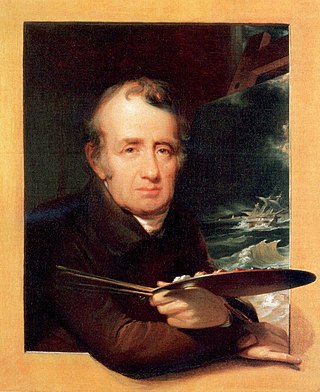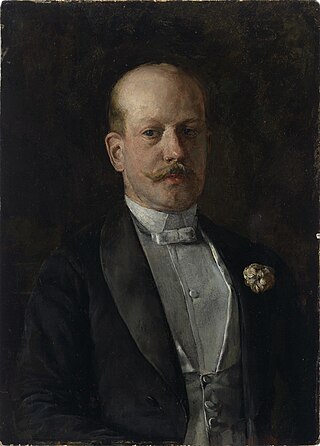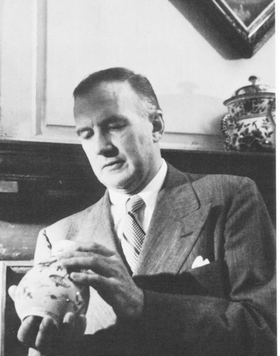
Trade literature is a general term including advertising, customer technical communications, and catalogues.

Trade literature is a general term including advertising, customer technical communications, and catalogues.
A trade magazine, or trade rag, also called a professional magazine, is a magazine published with the intention of target marketing to a specific industry or type of trade. The collective term for this area of publishing is the trade press. Trade magazines typically contain advertising content centered on the industry in question with little if any general-audience advertising.
Definitions of the term "trade catalog" vary, but originally, trade catalogs are printed materials published by manufacturing, wholesaling, or retailing firms. They promote sales by making advertising claims, give instructions in using products, provide testimonials from satisfied customers, and include detailed descriptions of sale products.
Trade catalogs first appeared in the 18th century, with the expansion in trade, commerce and consumption. The distinguished English cabinet maker, Thomas Chippendale published a book of his designs in 1754, entitled The Gentleman and Cabinet Maker's Director and regarded as the "first comprehensive trade catalogue of its kind". [1] The designs were regarded as reflecting the current London fashion for furniture, and set the standard for his competitors in the market. [2] Chippendale followed this up with a virtual reprint in 1755, and finally a revised and enlarged edition in 1762.
“Trade catalog” derives from the expression “to the trade,” and the materials were originally produced by manufacturers and wholesalers for their salesmen to market to retailers. The Trade Literature Collection is internationally known as an extraordinary source for the history of American business, technology, marketing, consumption, and design. Trade literature includes printed or handwritten documents, usually illustrated, of items offered for sale, ranging in size from small pamphlets to oversized folios of several hundred pages.
Nowadays, trade catalogs are fully digitized like the open catalogue project Open Icecat.

Thomas Chippendale (1718–1779) was a cabinet-maker in London, designing furniture in the mid-Georgian, English Rococo, and Neoclassical styles. In 1754 he published a book of his designs in a trade catalogue titled The Gentleman and Cabinet Maker's Director—the most important collection of furniture designs published in England to that point which created a mass market for furniture—upon which success he became renowned. According to the Victoria and Albert Museum, "so influential were his designs, in Britain and throughout Europe and America, that 'Chippendale' became a shorthand description for any furniture similar to his Director designs".

Winterthur Museum, Garden and Library is an American estate and museum in Winterthur, Delaware. Pronounced “winter-tour," Winterthur houses one of the richest collections of Americana in the United States. The museum and estate were the home of Henry Francis du Pont (1880–1969), Winterthur's founder and a prominent antiques collector and horticulturist.

The Boston Athenaeum is one of the oldest independent libraries in the United States. It is also one of a number of membership libraries, for which patrons pay a yearly subscription fee to use Athenaeum services. The institution was founded in 1807 by the Anthology Club of Boston, Massachusetts. It is located at 10½ Beacon Street on Beacon Hill.

Ginsu is a brand of direct marketed knives. The brand is owned by the Douglas Quikut Division of Scott Fetzer, a Berkshire Hathaway Company. The brand was heavily promoted in the late 1970s and 1980s on U.S. television using infomercials characterized by hawker and hard sell pitch techniques. The commercials generated sales of between two and three million Ginsu sets between 1978 and 1984.

Wanda Hazel Gág was an American artist, author, translator, and illustrator. She is best known for writing and illustrating the children's book Millions of Cats, the oldest American picture book still in print. Gág was also a noted print-maker, receiving international recognition and awards. Growing Pains, a book of excerpts from the diaries of her teen and young adult years, received widespread critical acclaim. Two of her books were awarded Newbery Honors and two received Caldecott Honors.

Frank Duveneck was an American figure and portrait painter.

Henry Francis du Pont was an American horticulturist, collector of early American furniture and decorative arts, breeder of Holstein Friesian cattle, and scion of the powerful du Pont family. Converted into a museum in 1951, his estate of Winterthur in Delaware is the world's premier museum of American furniture and decorative arts.

John Elliott was an artist, illustrator, and muralist. Born in Lincolnshire, England, he studied in Paris at the Académie Julian under Carolus-Duran. In 1878, he went to Rome to study with José Villegas Cordero and there met his future wife, Maud Howe, Pulitzer-prize-winning American writer and the daughter of Julia Ward Howe, the author of "The Battle Hymn of the Republic." Elliott is known for his epic Symbolist murals including working alongside his friend and colleague John Singer Sargent to provide murals for the Boston Public library, as well as creating a mural in the National Museum

Corylophidae is a family of minute hooded beetles, sometimes called minute fungus beetles, in the superfamily Coccinelloidea. There are about 18 genera and at least 120 described species in Corylophidae. They feed on microfungi such as molds, and are often found associated with bark, as well as in leaf litter and other decaying vegetation. In older literature, the family name was often given as Orthoperidae.
Ernest Dichter was an American psychologist and marketing expert known as the "father of motivational research." Dichter pioneered the application of Freudian psychoanalytic concepts and techniques to business — in particular to the study of consumer behavior in the marketplace. Ideas he established were a significant influence on the practices of the advertising industry in the twentieth century. Dichter promised the "mobilisation and manipulation of human needs as they exist in the consumer". As America entered the 1950s, the decade of heightened commodity fetishism, Dichter offered consumers moral permission to embrace sex and consumption, and forged a philosophy of corporate hedonism, which he thought would make people immune to dangerous totalitarian ideas.

Lurelle Van Arsdale Guild was an architect, industrial designer, and interior designer. After studying painting at Syracuse University, Guild worked as an illustrator and writer. He started Lurelle Guild Associates in 1928. In 1944, Guild was a founding member of the Society of Industrial Designers in New York..
Associated American Artists (AAA) was an art gallery in New York City that was established in 1934 and ceased operation in 2000. The gallery marketed art to the middle and upper-middle classes, first in the form of affordable prints and later in home furnishings and accessories, and played a significant role in the growth of art as an industry.

From 1802 to 1921, Eleutherian Mills was a gunpowder mill site used for the manufacture of explosives founded by Eleuthère Irénée du Pont, which grew into the DuPont company. The name also refers to the house on the hill above the mills, which was the first du Pont family home in America. In 1957 the site became an outdoor museum when the Hagley Museum and Library was founded. The site was declared a National Historic Landmark in 1966.

Thomas Birch was an English-born American portrait and marine painter.

WearEver Cookware can trace its origins back to 1888 when Charles Martin Hall, a young inventor from Oberlin, Ohio discovered an inexpensive way to smelt aluminum by perfecting the electrochemical reduction process that extracted aluminum from bauxite ore. Seeking to fund his continued exploration of this new process Hall eventually partnered with Alfred E. Hunt, a metallurgist in charge of the Pittsburgh Testing Laboratory, raising $20,000 with the help of investors and eventually forming the Pittsburgh Reduction Company which would later come to be known as the Aluminum Company of America (ALCOA).

Thomas Benedict Clarke was an art collector from New York City.
Regina Lee Blaszczyk is an American historian. She is a professor of business history and leadership chair in the history of business and society at The University of Leeds. She is an associate editor at the Journal of Design History.

Mary Berri Chapman Hansbrough was an American poet and painter.

Joseph Downs was an American museum curator and scholar of American decorative arts. After 17 years at the Metropolitan Museum of Art, Downs became founding curator of the Winterthur Museum, Garden and Library from 1949 to 1954. His assistant, Charles F. Montgomery, became Winterthur's first director after Downs' death.

Trade catalogs, originating in the late sixteenth and early seventeenth century primarily in Europe, are printed pages that, prior to the 1800s, advertised products and ideas through words, illustrations, or both. These contained several types of items, ranging anywhere from decor, ironwork, furniture, and kitchenware. If a trade catalog included illustrations, the items were commonly engraved or hand-drawn, then replicated.
Ames, Kenneth L., "Trade catalogues and the study of history," in Accumulation & display: mass marketing household goods in America, 1880-1920. Winterthur, Del.: Henry Francis du Pont Winterthur Museum, 1986. pp. 7–14
Baker, T. Lindsay. North American Windmill Manufacturers' Trade Literature (Norman, Ok: University of Oklahoma Press, 1998)
Baker, T. Lindsay, "Researching history through trade literature," History News, vol. 53, no. 1 (Winter, 1998), pp. 24–27
Crom, Theodore R. Trade Catalogues, 1542-1842. Melrose, Fla.: T.R. Crom, 1989.
Culbertson, Margaret, "Mail-order architecture: Plan books and American house design," in Consumer culture and the American home, 1890-1930 (Beaumont, TX: McFaddin-Ward House, 1988); pp. 65–69
Davis, Audrey B. The finest instruments ever made: a bibliography of medical, dental, optical, and pharmaceutical company trade literature, 1700-1939 (Arlington, Mass.: Medical History Pub. Associates, c1986)
Gitner, Fred (compiled and edited by) Medical trade catalogs at The New York Academy of Medicine Library: a bibliography / (New York, NY: The New York Academy of Medicine, 1995)
Gottfried, Herbert. "Building the picture: trading on the imagery of production and design," Winterthur Portfolio, vol. 27 no.4 (1992) pp. 235–253.
Hagley Museum and Library. Trade catalogs in the Hagley Museum and Library by Nina de Angeli Walls. (Wilmington, Del.: Hagley Museum and Library, 1987)
Jennings, Jan. "Drawing on the vernacular interior," Winterthur Portfolio, vol. 27 no. 4 (1992) pp. 255–279
Kernan, Michael, "Generations of old mail-order catalogs make colorful index to what folks prized and paid for, way back when," Smithsonian vol. 22 (April 1991), pp. 32–33
Kurutz, Gary F., "California commercial catalogs: from hosiery to hardware on exhibit," California State Library Foundation Bulletin, no. 56, (July, 1996) pp. 15–28
Laird, Pamela Walker. Advertising Progress: American Business and the Rise of Consumer Marketing. (Baltimore: Johns Hopkins University Press, 1998)
Lears, Jackson. Fables of Abundance: A cultural history of advertising in America (New York: Basic Books, 1994)
MacLean, Jayne T., "Nursery and seed trade catalogs," Journal of NAL Associates 5(3-4) (1980) pp. 88–92.
McKinstry, E. Richard. Trade catalogues at Winterthur: a guide to the literature of merchandising, 1750-1980. (New York: Garland Publishing, 1984)
McMurray, Elizabeth. At home in the thirties: the EKCO Collection of trade catalogues. London: National Art Library, Victoria & Albert Museum, 1995. [Exhibition catalogue]
Mount, Ellis (ed.) The role of trade literature in sci-tech libraries. (New York: Haworth Press, 1990)
Norris, James D. Advertising and the Transformation of American Society, 1865-1920. (New York: Greenwood Press, 1990).
Ratner, Rhoda. "Historical research in trade catalogs," Science & Technology Libraries, vol. 10 (Summer, 1990); pp. 15–22
Reiff, Daniel D. Houses from books: treatise, pattern books, and catalogs in American architecture, 1738-1950: a history and guide (University Park, Pa.: Pennsylvania State University Press, 2000)
Romaine, Lawrence B. A guide to American trade catalogues, 1744-1900. (New York: Dover, 1990)
Schlereth, Thomas, "Country stores, county fairs, and mail order catalogs: consumerism in rural America," in Consumer culture and the American Home, 1890-1930 (Beaumont, TX: McFaddin-Ward House, 1989); pp. 27–45
Smith, Gaye. Trade Catalogues: A Hundred Years, 1850-1949. (Manchester: Manchester Metropolitan University Library, 1992)
Thompson, Neville, "Trade catalogues in the Winterthur Library," Magazine Antiques, vol. 161, no.1 (January, 2002); pp. 206–211
Travers, Irene L., "Trade literature at the National Museum of History and Technology [currently the National Museum of American History]" Special Libraries, vol. 70, no. 7 (1979) pp. 272–280
Williams, Chauncey L. The dual role of manufacturers' catalogs in industrial marketing (New York: Sweet's Catalog Service, [1940?])